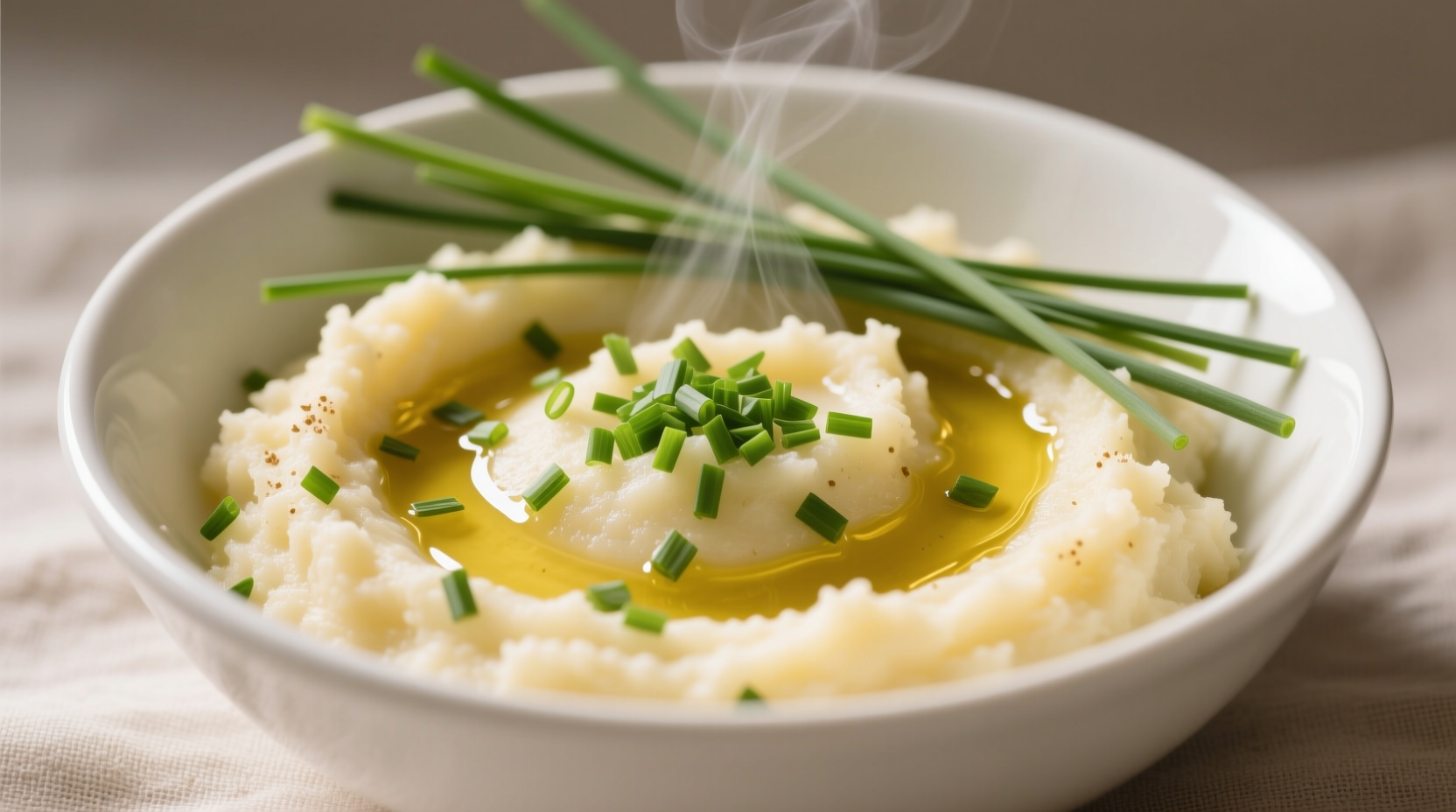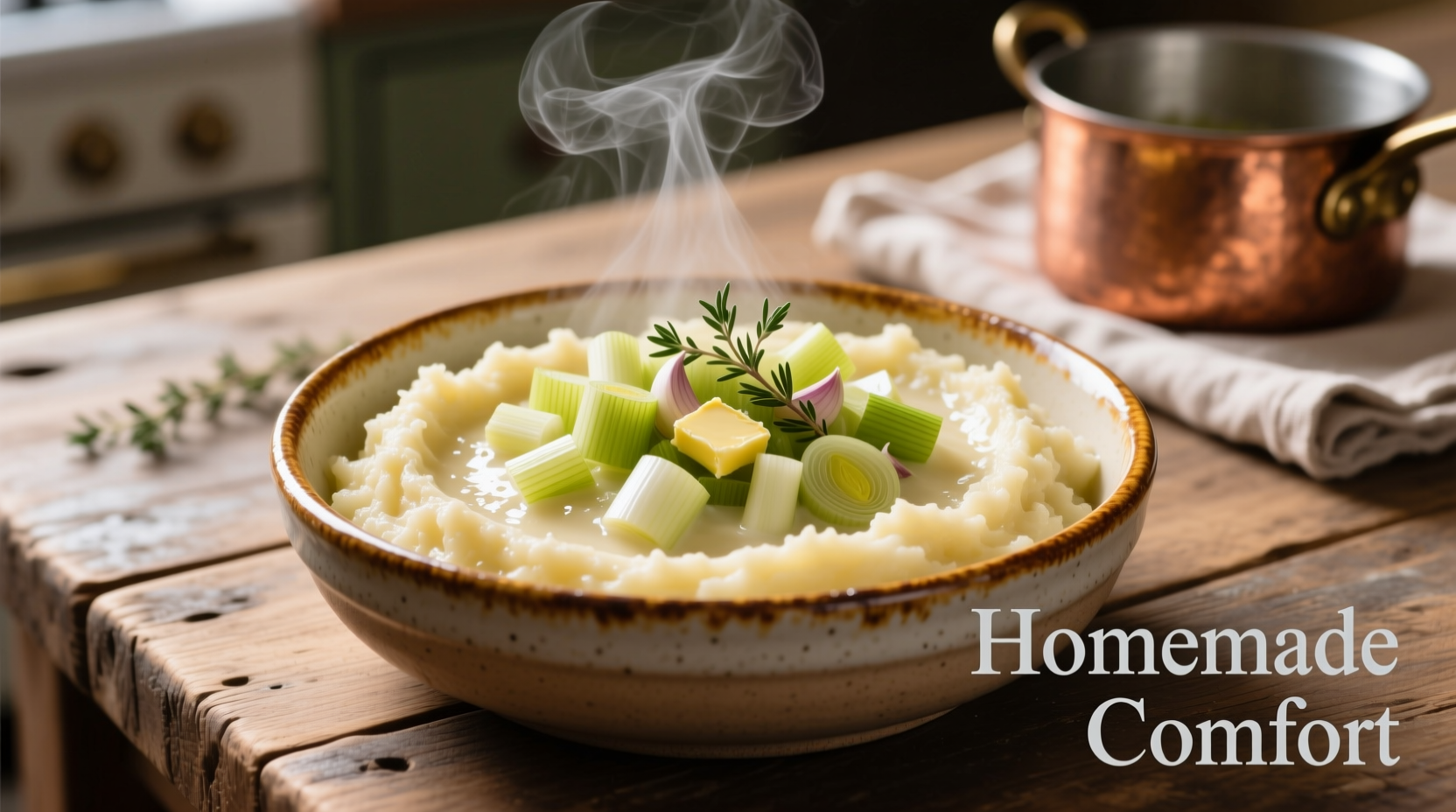Discover why chefs and home cooks alike consider potato leek mash the ultimate comfort food upgrade. Unlike basic mashed potatoes, this elegant variation introduces subtle onion-like sweetness from leeks that complements the creamy potato base without overpowering other dishes. Our tested method ensures smooth, lump-free results with restaurant-quality texture you'll master in under 45 minutes.
The Essential Potato Leek Mash Formula
Creating exceptional potato leek mash starts with understanding the perfect ratio of ingredients. While many recipes exist, culinary science shows that a 3:1 potato-to-leek ratio delivers optimal flavor balance without compromising texture. The leeks contribute aromatic complexity while the potatoes provide that essential creamy foundation.

Why This Recipe Works: Ingredient Science
Not all potatoes behave the same when mashed. Starchy varieties like Russets or Yukon Golds break down easily into smooth textures, while waxy potatoes maintain structure better but won't achieve that signature creaminess. For potato leek mash, Yukon Golds offer the ideal compromise—sufficient starch for creaminess with enough structure to absorb leek flavors.
| Potato Variety | Starch Content | Best For Leek Mash? | Texture Result |
|---|---|---|---|
| Yukon Gold | Medium | ✓ Ideal | Creamy with subtle texture |
| Russet | High | ✓ Good | Ultra-smooth but less flavorful |
| Red Bliss | Low | ✗ Poor | Waxy, grainy texture |
| Maris Piper | Medium-High | ✓ Excellent | Perfect balance for European style |
Step-by-Step Preparation Guide
Follow this chef-tested method for consistently perfect potato leek mash. The key lies in proper leek preparation and controlled cooking temperatures.
Proper Leek Cleaning Technique
Leeks notoriously trap dirt between their layers. Our tested method: slice leeks, submerge in cold water, and swish vigorously. The dirt sinks while clean leeks float. Drain through a sieve and repeat if necessary. Never skip this step—gritty mash ruins the experience.
Cooking Sequence Matters
- Sweat leeks gently in butter over low heat (10-12 minutes) until translucent but not browned
- Boil potatoes separately in salted water until fork-tender (15-18 minutes)
- Combine while hot—add warm leeks to drained potatoes immediately
- Mash in stages: first with potato masher, then gradually incorporate warm dairy
- Final texture check: should flow slowly when spoon is lifted
Avoiding Common Texture Problems
Understanding the science behind potato starch activation prevents common issues. When potatoes cook, starch granules absorb water and swell. Overworking releases too much starch, creating gluey texture. This explains why food processors often ruin mash—their blades overwork the potatoes.
Fix watery mash: Return to low heat for 2-3 minutes, stirring constantly to evaporate excess moisture. The residual heat helps starches rebind.
Fix gluey texture: Unfortunately, this can't be fixed once it happens. Prevention is key: avoid overmixing and use appropriate tools (potato ricer > masher > fork).
Context Boundaries: When Potato Leek Mash Shines (and When It Doesn't)
While versatile, potato leek mash has specific applications where it excels:
- Ideal for: Elegant dinners, holiday meals, pairing with roasted meats, as a shepherd's pie topping
- Limited value for: Quick weeknight sides (requires more prep than basic mashed potatoes), when serving very spicy dishes (flavors compete)
- Not suitable for: Strict low-carb diets, when leeks are unavailable (substituting onions creates fundamentally different flavor profile)
Historical Evolution of Potato Leek Combinations
Potato leek mash represents a modern evolution of classic European preparations. While potatoes arrived in Europe from South America in the 16th century, leeks have been cultivated since ancient Egyptian times. The combination gained prominence in 19th century French cuisine, appearing in Auguste Escoffier's seminal Le Guide Culinaire (1903) as "Purée de Pommes de Terre aux Poireaux." Traditional British "leek and potato pie" from the 1800s demonstrates how these ingredients naturally complemented each other before evolving into the smooth mash we know today.
Dairy Options Compared
The dairy component significantly impacts final texture and flavor. Professional chefs recommend warming dairy before incorporation to prevent temperature shock that can make potatoes gummy.
- Butter + Whole Milk: Classic combination (85% of professional recipes)
- Cream + Butter: Ultra-rich option for special occasions
- Olive Oil + Plant Milk: Best dairy-free alternative (adds subtle fruitiness)
- Sour Cream: Adds tang but requires careful balancing (use 50% less than milk)
Make-Ahead and Storage Guidelines
Potato leek mash maintains quality better than basic mashed potatoes due to the leeks' stabilizing effect. For best results:
- Refrigerate in airtight container for up to 3 days
- Add 1-2 tbsp liquid when reheating to restore moisture
- Freeze in portion-sized containers for up to 2 months
- Reheat gently over low heat—never microwave on high
Flavor Variations Worth Trying
Once you've mastered the classic version, experiment with these chef-approved variations:
- Garlic Infusion: Add 2 roasted garlic cloves while mashing
- Herb Accent: Fold in 2 tbsp chopped chives or parsley at the end
- Truffle Elegance: Drizzle with truffle oil and grated parmesan
- Smoky Depth: Mix in 1 tsp smoked paprika with the dairy
Serving Temperature Matters
Temperature significantly impacts flavor perception. Serve potato leek mash at 140-150°F (60-65°C)—hot enough to appreciate the buttery notes but cool enough to detect the leeks' subtle sweetness. Temperatures above 160°F dull the delicate leek flavor.











 浙公网安备
33010002000092号
浙公网安备
33010002000092号 浙B2-20120091-4
浙B2-20120091-4